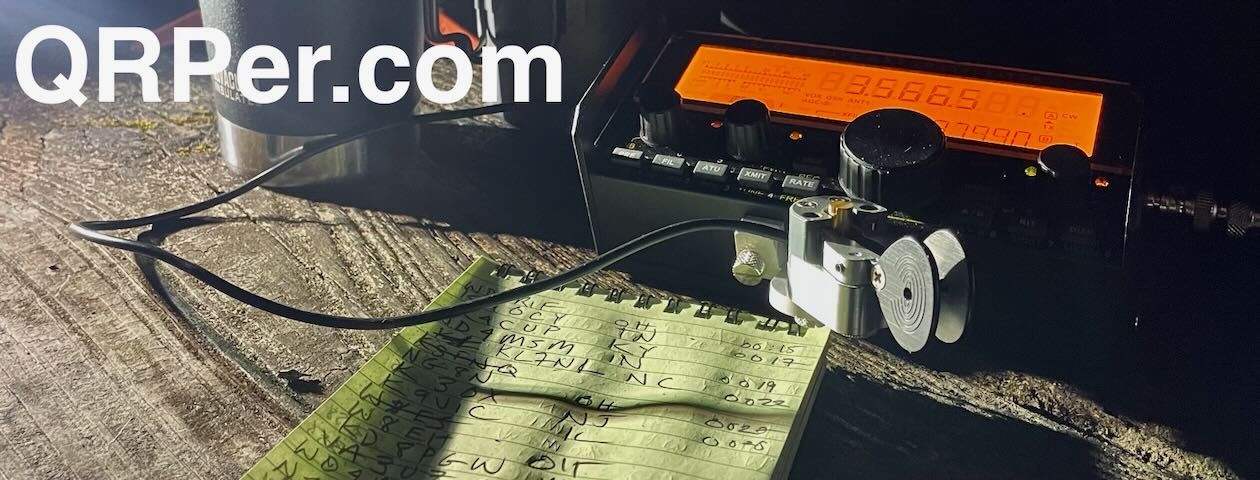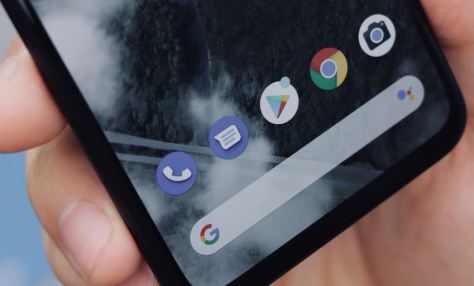 Many thanks to Pete (WB9FLW) who shares the following article by Bob (KD8CGH) regarding the uSDX transceiver kit.
Many thanks to Pete (WB9FLW) who shares the following article by Bob (KD8CGH) regarding the uSDX transceiver kit.
I reached out to Bob who has kindly given me permission to share his article on QRPer:
An Introduction to the uSDX
by Bob Benedict (KD8CGH)
There is a new open source, home brew multi band, multi mode QRP transceiver that grew out of the QRP Labs QCX. Through some serious wizardry it retains an efficient class E RF amplifier for SSB and digital modes. It crams impressive SDR capabilities into an Arduino.
This has an interesting international development process conducted on https://groups.io/g/ucx/topics with contributions by many, including the usual gang of suspects: Hans Summers G0UPL, Guido Ten Dolle PE1NN, Barbaros Asuroglu WB2CBA , Manuel Klaerig DL2MAN, Kees Talen K5BCQ, Allison Parent KB1GMX, Jean-Marie T’Jaeckx ON7EN, Ashhar Farhan VU2ESE, and Miguel Angelo Bartie PY2OHH. I apologize to the many others whose names I didn’t list. A summary is in the WIKI https://groups.io/g/ucx/wiki.
The basic work uSDX appears to have been accomplished by Guido Ten Dolle PE1NNZ. It uses pulse width modulation of the PA supply voltage to transmit modes other than CW while retaining class E efficiency and uses a direct conversion SDR receiver.
The basic idea behind Class E nonlinear amplifiers is that transistors have little loss when they are switched fully on or off. The losses occur when devices are limiting power flow in linear amplifiers. The idea behind a Class E amplifier is to use transistors in a switching mode to generate a square wave to drive a resonant circuit to generate RF power.
This method is used in the popular QCX QRP CW transceiver kit line developed by Hans Summers and sold through QRP Labs https://qrp-labs.com/. More than 10,000 of these great transceiver kits have been sold (I built one). There is a good discussion of the circuit and particularly of the class E amplifier in the excellent QCX documentation https://www.qrp-labs.com/images/qcx/assembly_A4-Rev-5e.pdf.
The QCX was the base for the QCX-SSB which starts with a QCX and modified the circuit and software to add SSB capabilities. The wizardry that Guido accomplished uses pulse width modulation of the PA supply voltage to control the amplifier in an Envelope Elimination and Restoration (EER) technique https://core.ac.uk/download/pdf/148657773.pdf. To generate SSB a DSP algorithm samples the audio input and performs a Hilbert transformation to determine the phase and amplitude of the complex signal. The phase changes are transformed into temporary frequency changes which are sent to the clock generator. This result in phase changes on the SSB carrier signal and delivers a SSB-signal with the opposite side-band components is attenuated.
On the receive side a direct conversion SDR receiver is used with the I and Q signal digitized and all further processing carrying out digitally. Attenuators are included to help not overload the ADC range. Documentation is at https://github.com/threeme3/QCX-SSB . In addition to a good description of the theory and hardware mod there is also a good description of the software command menu.

From there development took off in several directions. One is by Barbaros Asuroglu WB2CBA and Antrak that uses through hole components (mostly) and replaceable band boards that hold the low pass filter and band dependent class E amplifier components (an inductor and capacitor). Barb also includes boards designed to be a case top and bottom, battery pack and a PA.

Another development track by Manuel Klaerig DL2MAN uses SMT components in a stacked board layout and has a relay switched band pass board https://groups.io/g/ucx/message/1596 and https://groups.io/g/ucx/files/DL2MAN uSDX-Sandwich Files. A new revision has been released that uses serial resonance class E amp design and easier to obtain relays, https://groups.io/g/ucx/files/DL2MAN uSDX-Sandwich Files with new Serial Resonance Class E Multiband Circuit .

Other development streams include one by Kees Talen K5BCQ https://groups.io/g/ucx/files/K5BCQ uSDX Board Schematics and Jean-Marie T’Jaeckx ON7EN https://groups.io/g/ucx/files/QCXV4.zip.
I built the variant designed by Barbaros Asuroglu WB2CBA and I’m pleased with it’s performance. I ordered 10 main boards and 40 LP filter band boards PCBs from PCBWAY, but now you can also purchase single boards sets from https://shop.offline.systems/.
I also designed and 3D printed a case for the transceiver and a small box to carry band boards. Info at https://www.thingiverse.com/thing:4582865 and at https://www.thingiverse.com/thing:4587868 and also in the files section https://groups.io/g/ucx/files/3D printed case for Barb WB2CBA V1.02.

In an example of hams collaborating at its finest, Hans Summers announced on 9/11/2020 that his new QCX mini product, a QCX in a smaller package, will include a daughter board that can be used to give the QCX mini a uSDX like SSB capability. The QCX mini has the same circuit as the QCX but uses SMD components packaged it into a two board stack that is less than half the volume of the original QCX. The mod is unsupported by QRP-LABS but may be supported by the uSDX group.
http://qrp-labs.com/qcxmini.html
More information at https://groups.io/g/ucx/topics and don’t forget the WIKI https://groups.io/g/ucx/wiki.
73
Bob, KD8CGH
Many thanks again, Bob, for sharing this excellent uSDX introduction. Thanks again for the tip, Pete!
Pete also notes that there is a very active uSDX experimenters discussion group on Groups.io with over 100 members: https://groups.io/g/ucx
 Many thanks to Pete (WB9FLW) who shares the following announcement from Sunil Lakhan (VU3SUA):
Many thanks to Pete (WB9FLW) who shares the following announcement from Sunil Lakhan (VU3SUA):













